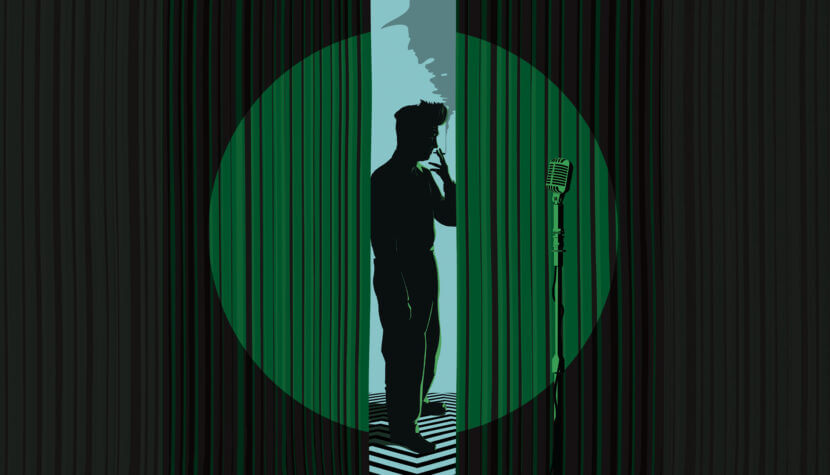LYNCH/OZ. Behind the Green Curtain

In 1939, two iconic American films based on a similar plot structure premiered. The protagonist from a small town embarks on a magical journey, during which he discovers the secret to a good life, hidden in appreciating the rejected everyday. As the old saying goes, a person never appreciates what they have until they lose it. Both films surprisingly faced financial failure in theaters but quickly became hits once they aired on television, securing a place in the schedules of the most popular channels. The first of these films is The Wizard of Oz, and the second is It’s a Wonderful Life. Fate dictated that in the unique subconscious of David Lynch, the first screening of Victor Fleming’s work, not Frank Capra’s, permanently engraved itself. This event had far-reaching consequences, echoing throughout Lynch’s later works, as demonstrated by Alexandre O. Philippe in his new documentary.
Director of Lynch/Oz is slowly gaining a monopoly on telling the stories of great filmmakers and their works. He began his cinematic journey with a documentary on the phenomenon of Star Wars, emphasizing the ambivalent reception of the prequels (“The People vs. George Lucas”). Along the way, he made films about Psycho (“78/52”), The Exorcist (“Leap of Faith: William Friedkin on The Exorcist”), and Alien (“Memory: The Origins of Alien”). Philippe’s documentaries always stand out for their bold and analytical approach. Philippe is not interested in skimming the surface or reciting the most important facts and recalling classical, academic texts. He prefers to take risks and delve into the subject. This is evident in his film about Psycho, a half-hour analysis that uses perhaps the most famous scene from Hitchcock’s rich filmography—the shower murder scene—as a starting point. While in “78/52,” Philippe convincingly argued with cinematic bravado that Psycho is the ultimate masterpiece, the mother of all cinema (citing examples from all over, from 2001: A Space Odyssey and The Conversation to Dario Argento’s giallo films), in Lynch/Oz, he does the same with the famous Wizard… This time through the prism of the filmography of one creator but with the voices of up to seven different narrators.

In Lynch/Oz, we hear (but do not see) American film critic Amy Nicholson, Rodney Ascher (“Room 237”), John Waters (“Pink Flamingos”), Karyn Kusama (“Destroyer”), Justin Benson and Aaron Moorhead (“The Endless”), and David Lowery (“The Green Knight”). Philippe abandons the classical “talking heads” used in 78/52 in favor of more archival materials. However, he maintains a polyphony of voices, constructing his film based on six chapters, or rather, six individual video essays. The narrators have room to maneuver—each tries to bite into Lynch’s filmography from a different angle, sometimes focusing on the analysis of a specific film and sometimes meandering between dozens of titles in search of common narrative and aesthetic motifs. “The Wizard of Oz” plays a dominant role in these explorations: it serves as the interpretive key, a lock pick opening the doors to David Lynch’s surreal imagination.
Getting there is one thing. Finding the right path, paved with yellow bricks, is a completely different matter. Fortunately, the narrators guide us hand in hand during this journey. They help us see scattered references to Fleming’s film in “Wild at Heart,” explain the existence of Lynchian doppelgängers and the constant presence of red curtains, and finally, elucidate who the mysterious Judy from “Twin Peaks” might refer to. Their interpretations are not, of course, definitive; it’s better to treat them as non-binding proposals rather than revealed truths. Lynch’s work is just as effective in its virgin state: as an unsolvable puzzle, a labyrinth with no way out, disintegrating right after the waking dream. Deconstructing the works of the author of “Mulholland Drive” into their basic elements is, of course, great fun and an interesting intellectual challenge—just don’t let the entire cinematic magic escape in the meantime. Perhaps these are examples from a slightly different realm, but I still remember my ambivalent reaction to the psychoanalytic interpretations of “Alien” and “Antichrist”—interesting texts but stripping those otherwise beautiful films of their mystery; analyzing them according to a banal, predetermined scheme. Do you remember that disgusting, blatantly sexist saying that the key opening all locks is better than a lock opened by all keys? I think, in the case of the most outstanding texts of culture, it’s exactly the opposite. In other words, we should never be satisfied with the “one true” interpretation of “Mulholland Drive.” The greatness of this cinematic puzzle lies in its ambiguity: susceptible to very different interpretations depending on the viewer’s interpretative skills. Keep searching or don’t search at all. Otherwise, we’ll face the same disappointment that Dorothy experienced after accidentally exposing the powerful wizard. The difference is that we’ll only think we’ve unmasked anyone.

Related:
The chapter authors—and kudos to them for that—also allow themselves personal reflections from time to time, detached from analytical decorum. The encounter with art becomes a testimony of an interesting meeting—of the viewer with an interesting work. John Waters explains how “The Wizard of Oz” encouraged him to try LSD, enriching Dorothy’s cinematic journey with a psycho-physical journey into a new state of consciousness. David Lowery talks about how, in his childhood, he tortured a worn-out VHS copy of Fleming’s film in search of the hanged man—a stuntman’s body who supposedly committed suicide on the set of “The Wizard of Oz.” Rodney Ascher shares mysterious circumstances of viewing the eighth episode of the third season of “Twin Peaks” (yes, the one in black and white). After the first viewing, the director found torn bird carcasses in the living room. After the second, he learned of his father’s death. The darkest episode of Lynch and Frost’s series, exploring the theme of the birth of evil, irrevocably intertwined with the concept of death for Ascher.
Krzysztof Piesiewicz, the screenwriter of Krzysztof Kieślowski’s films, once talked about disturbing intersections of fiction and reality in a book interview with Mikołaj Jazdon. The murder of the taxi driver from “A Short Film About Killing” found its reflection in the brutal murder of Piesiewicz’s mother (committed using the same tool—a rope), and the heart defect suffered by the characters in several of Kieślowski’s films—in the details of the director’s death. All of this, I believe, is just a series of strange coincidences. However, Ascher does not plan another viewing of the eighth episode of “Twin Peaks” in the near future, and Piesiewicz, as a rule, has stopped using personal stories and details of people close to him in his scripts.

In Philippe’s documentary, a crucial question arises at one point: would David Lynch be the same artist, and more broadly, the same person, if he hadn’t watched “The Wizard of Oz” in his youth? If Lynch/Oz proves something emphatically and unquestionably, it’s that works of art have formative potential. We are what we have read and watched: the sum of our film and book readings. Cultural texts we have encountered in childhood shape our tastes and minds—often permanently. If Lynch had immersed himself in “It’s a Wonderful Life” in his youth, we might today be looking for references to George Bailey, Clarence the angel, and the sinister Pottersville in his films (who knows how they would look exactly?). Philippe’s documentary would be titled Lynch/Capra and would include, I presume, a completely different set of narrators—the biggest enthusiasts of the Christmas classic. Jokes aside, it’s worth remembering that Fleming’s film is just one of countless interpretative contexts for Lynch’s work. Incredibly important, but not the only one. Let’s keep this in mind during the next screenings of “Eraserhead,” “The Elephant Man,” or “Lost Highway.” Let’s be vigilant and open, and above all, never pretend that we’ve unmasked the man behind the green curtain. In Lynch’s case, as in the famous Red Room from “Twin Peaks,” another curtain always hides behind the curtain.





